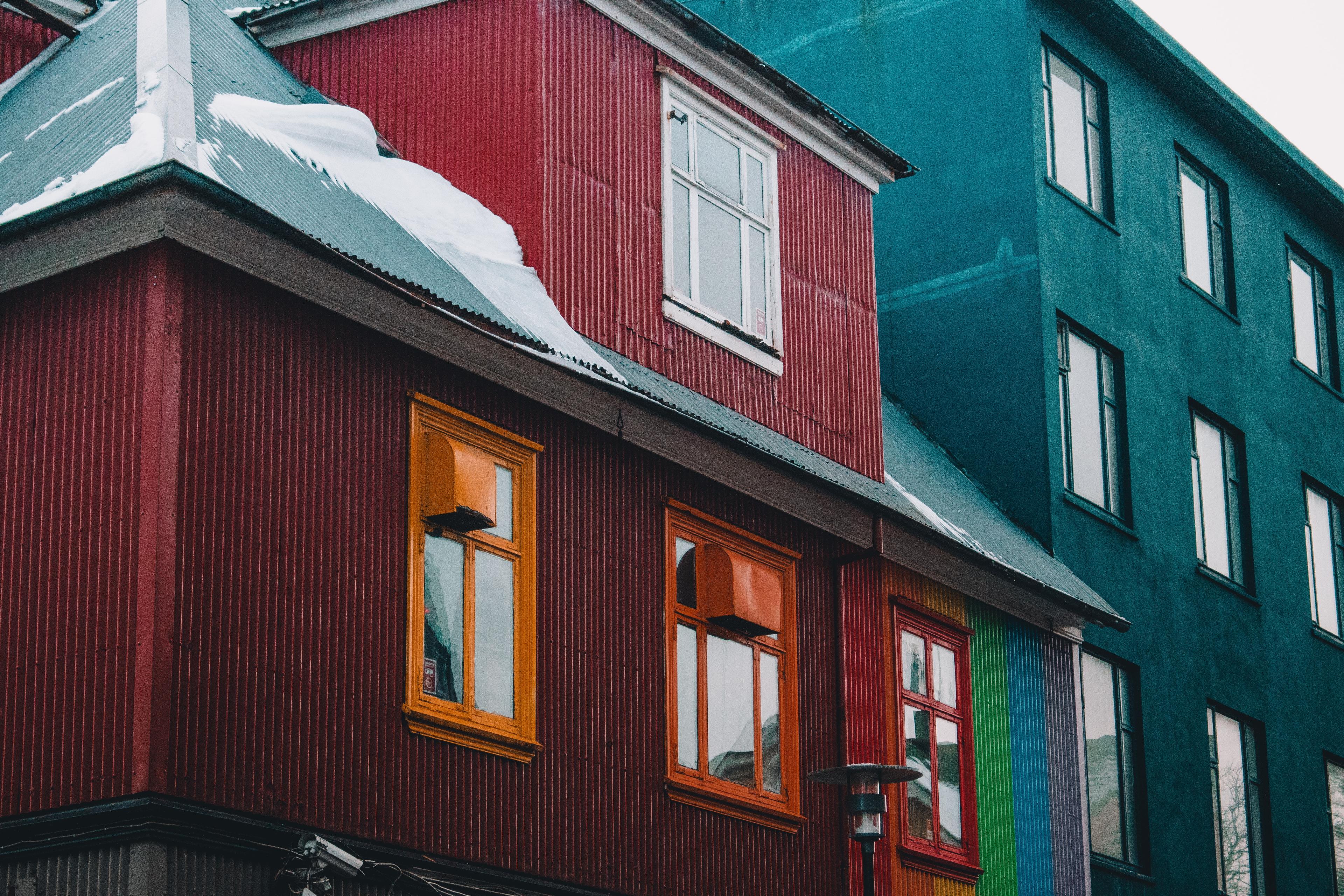Reykjavík City Walk: Guide to Iceland's Vibrant Capital
Table of Contents
Hugging the shores of Faxaflói Bay and overshadowed by the magnificent Mount Esja, Reykjavík is renowned for its lively ambience and creativity. The city's quirky downtown district bustles with an eclectic mix of quaint coffee shops, artisan boutiques, hip bars, and world-class restaurants, all conveniently nestled amidst a sprawling mural of captivating street art.
Why Visitors Fall in Love with Reykjavík
Over the past decade, Reykjavík has fast become a favoured travel destination, attracting nearly two million tourists annually. These travellers, vastly outnumbering the city's full-time residents, bring with them an invigorating energy, blending seamlessly with the city's laid-back, friendly atmosphere.
While Reykjavík might feel like an intimate village, it offers everything that larger cities do, but without the hassle. Visitors often describe it as a hassle-free city that's safe, clean, and packed with restaurants, shopping, culture, vibrant culture and nightlife. Its small-scale urban centre is easy to navigate, making it a comfortable and convenient place to explore.
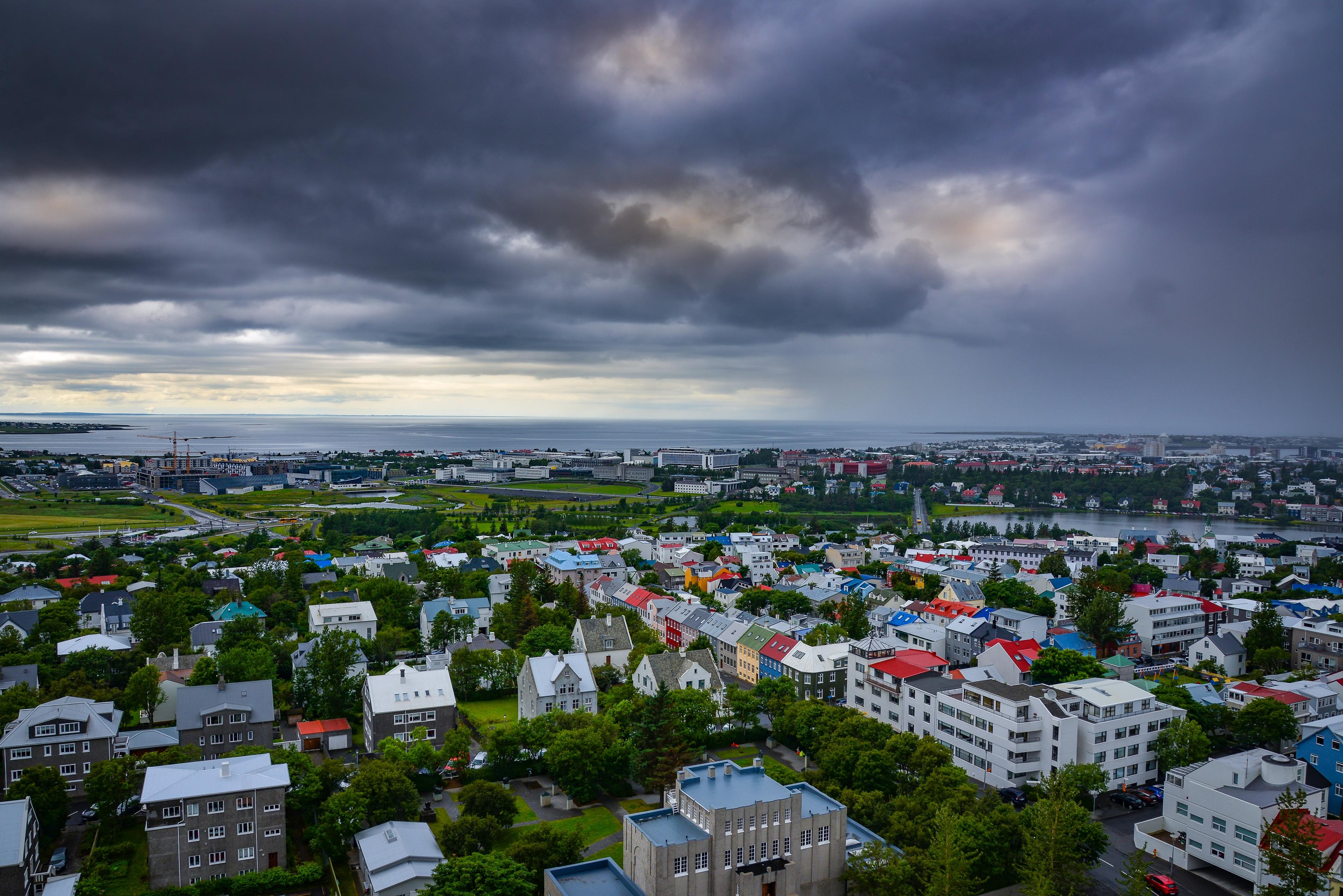
Where Urban Charm Meets Unspoiled Nature
Being the world's northernmost capital, Reykjavík holds the unique attraction of unparalleled proximity to nature. The city effortlessly blends with its surrounding geography, where geothermal hot springs and rugged terrains are just a stone's throw away from the hustle and bustle. In Reykjavík, you don't have to choose between the charms of a city and the allure of nature – they exist together in a fascinating harmony that is sure to make your visit memorable.
So, if you're in search of an adventure that combines nature's raw power with a cultural immersion into the world of Vikings, sagas, and captivating modern-day tales, Reykjavík is a destination you simply can't ignore.
The best way to experience the city, its culture, and its geological wonders, is undoubtedly through a walk in the downtown area. Additionally, you can board a double-decker city sightseeing bus or join a guided food tour, bar crawl, or city walk.
In this comprehensive guide, we’ll take you on a journey through the heart of Iceland's capital city. We'll explore the geology that defines Reykjavík, plan for the ideal visit, guide you through the highlights of the city walk, and reveal the unique experiences that this enchanting city holds in its folds. Buckle up and prepare for an adventure that's as enchanting as it is exhilarating. Let's set forth on our Reykjavík City Walk!
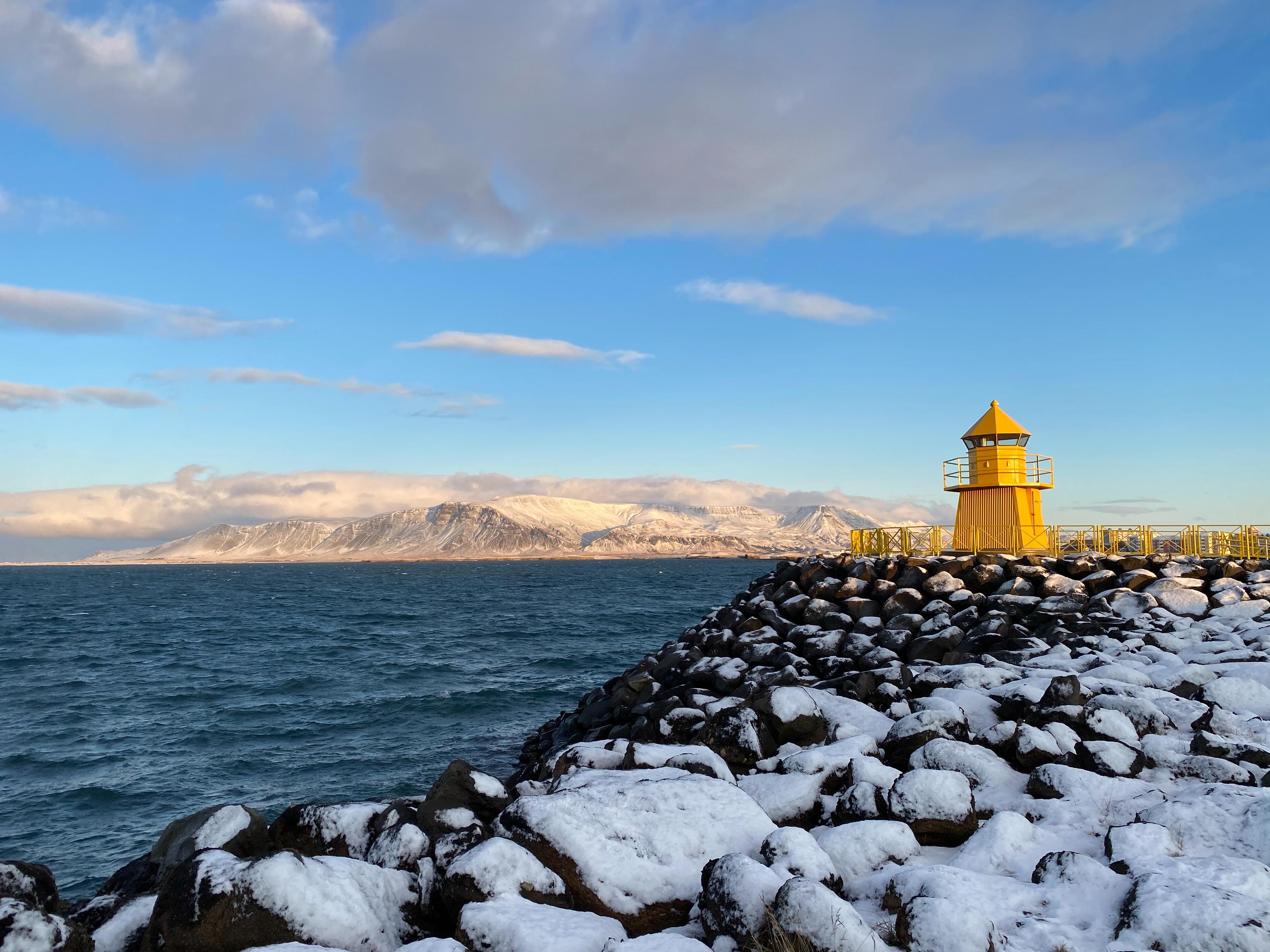
The Geological Tapestry of Reykjavík
Before we step out onto the bustling streets of Reykjavík, let's take a moment to appreciate the fascinating geological tale that has unfolded over millennia to give birth to the city as we see it today.
Iceland, dubbed the "Land of Fire and Ice", is a geologist's paradise. Born from volcanic activity under the Atlantic Ocean nearly 20 million years ago, Iceland is still growing, with frequent eruptions adding to its landmass. The island's dramatic landscapes owe their existence to the Mid-Atlantic Ridge, where the North American and Eurasian tectonic plates meet.
Reykjavík itself sits on the southwestern edge of this geologically active island. One of this region's remarkable geological features is the Reykjanes Ridge, an extension of the Mid-Atlantic Ridge that surfaces on the Reykjanes Peninsula. This area is teeming with geothermal activity, creating a unique blend of geology and urban living. The striking Hallgrímskirkja church was even designed to resemble the basalt lava flows that are a common sight across Iceland's landscape.
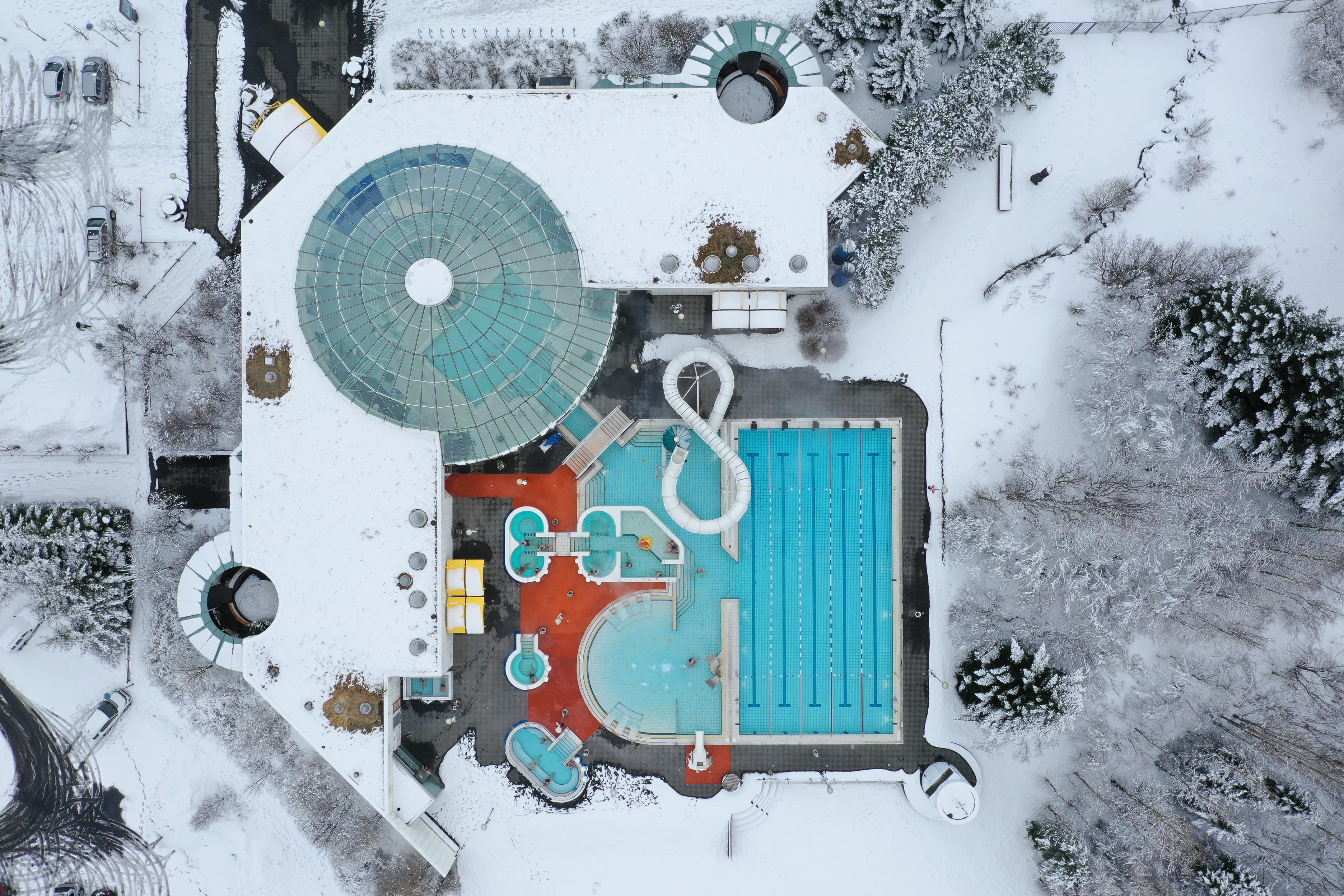
Embracing Geothermal Energy in Reykjavík's Chilly Climate
The geology of Reykjavík has significantly influenced not only its physical structure but also its cultural and societal norms. Geothermal energy, harnessed from the ground beneath the city, doesn't merely function as a heating solution for homes and supply of hot water across Reykjavík - it also forms a vital part of the city's social fabric in the form of geothermal baths.
These baths, abundant and strategically spread across the city, are an intrinsic part of Reykjavík's identity. They serve as a social hub where locals gather to relax, rejuvenate and engage in lively conversations, creating a unique communal atmosphere.
The baths are open 14 to 16 hours every day, throughout the year, making them a constant and accessible source of warmth, relaxation and camaraderie. Whether it's the middle of a snowy winter day or a long summer evening, the geothermal baths offer a warm embrace, making them an indispensable part of the local lifestyle.
As such, Reykjavík's geothermal baths illustrate the city's seamless integration of its unique geology with everyday life, marking it as a truly eco-conscious and community-oriented city.

Embarking on a tour through Reykjavík is like stepping into the pages of a storybook, where colourful houses meet stark landscapes and historical tales are etched into every corner.
Preparing for Your Trip to Reykjavík
As we’ve now whetted your appetite for an exploration of Reykjavík’s unique geology, culture, and urban landscape, let’s move on to some practical advice for your upcoming adventure.
Choosing Your Perfect Season: Best Times to Visit Reykjavík
The 'best time' to visit Reykjavík is subjective and greatly depends on your preferences. For those keen on long daylight hours and milder temperatures, the summer months from June to August are ideal. The Midnight Sun phenomenon during this period provides nearly 24 hours of daylight, giving you ample time to explore the city and beyond.
However, if witnessing the Northern Lights tops your bucket list, darker winter months between September and March would be more suitable. Do note that Icelandic winters are marked by shorter days, colder weather, and occasional snowstorms, which add a different kind of charm to the city's landscape.
Spring and autumn, too, hold their unique allure, with fewer tourists, moderate weather, and beautiful seasonal transitions. Whichever time you choose, Reykjavík's natural and cultural wonders will greet you with open arms.
Reaching Reykjavík and Navigating the City: From Airport to Attractions
Keflavík International Airport is located around 50 kilometres from the city centre; there are several convenient options to transport you into Reykjavík. The most popular among travellers is the Flybus service, which provides a direct link between the airport and the city. Running in sync with incoming flights, the service ensures a comfortable ride, dropping passengers off at key hotels and the central bus station in Reykjavík.
Once you've arrived in Reykjavík, the city unfolds before you in all its Nordic charm. Despite being a capital city, its compact size makes it perfectly manageable for walkers. Embarking on a walking tour is one of the best ways to explore the city.
However, if you want to see the sights without the legwork, consider the Hop On Hop Off Bus service. With numerous stops at the city's prime attractions and the freedom to hop off at your leisure, this service offers a flexible approach to sightseeing.
For those with a love of the outdoors, various nature sightseeing tours depart from Reykjavík daily. These excursions give you the chance to witness some of Iceland's most captivating natural wonders, including the renowned Golden Circle route, the dramatic South Coast, and the ethereal Northern Lights during the winter months.
Regardless of how you choose to explore, Reykjavík is a city that invites you to immerse yourself in its culture, to walk its streets, and to breathe in its fresh, Arctic air. Its unique blend of natural beauty, history, and vibrant city life makes it a destination like no other.
Discovering Reykjavík on Foot: Highlights of the City Walk
This walkable city teems with a vibrant energy that blends seamlessly with its natural beauty, offering visitors a unique journey through its heart.
Begin your city walk at the stunning Hallgrímskirkja, an architectural marvel and one of the city's most distinctive landmarks. Towering over Reykjavík, this Lutheran church's design was inspired by the basalt lava columns that form part of Iceland's unique geological backdrop.
Don't miss the opportunity to take an elevator to the top of the church's bell tower. From here, you can soak in the panoramic views of the city's colourful rooftops, the surrounding mountains, and the glistening sea.
From the towering grandeur of Hallgrímskirkja, your journey continues towards Harpa, Reykjavík's state-of-the-art concert and conference centre. As you meander your way through this section of the city, however, don't rush. This is the beating heart of Reykjavík, and it deserves more than just a passing glance.
The small streets that crisscross between Hallgrímskirkja and Harpa are vibrant threads in the fabric of the city, each one weaving a story of its own. It is here, in the labyrinth of these charming alleyways, that you'll come face-to-face with Reykjavík's distinctive character and spirit.
Lose yourself (figuratively, of course) in these veins of the city, exploring each bend and corner. You'll find the walls around you to be an open-air gallery adorned with creative and colourful street art that reflects the city's energy and artistic soul.
Keep an eye out for souvenir shops dotted along the way, each offering a treasure trove of unique Icelandic trinkets, from hand-knit ‘lopapeysa’ sweaters to intricate volcanic rock jewellery. Popping into these shops not only gives you a chance to bring home a piece of Iceland but also supports local craftsmen and artisans.
Cafés, too are plentiful in this area, their warm and inviting ambience providing a cosy haven for a leisurely coffee break. Many of these establishments offer a window into Reykjavík's café culture, their menus often featuring a delightful array of Icelandic pastries. Take a moment to indulge in this culinary experience; after all, exploring is hard work!
Closer to Harpa, the cityscape opens up to the stunning ocean shore. The scenic waterfront promenade is a peaceful respite from the urban bustle and offers awe-inspiring views of the mountain-framed bay.
Finally, you'll arrive at the impressive Harpa. This architectural gem, with its shimmering geometric glass panels, is not just a hub for the arts but also a testament to the city's resilience. The economic turbulence that marked its construction could not dampen Reykjavík's spirit. The completion of Harpa stands as a powerful symbol of Reykjavík's revival and its unwavering determination to march forward, much like the ceaseless waves of the North Atlantic Ocean that it overlooks.
Continue your journey to Tjörnin, a charming city pond that sits at the heart of Reykjavík. A favourite among locals and visitors alike, Tjörnin is a serene spot to observe waterfowl or simply unwind. During the winter months, you can join the locals in ice-skating or feed the ducks and geese that gather around the pond's geothermally heated edges.
To maximise your city walk experience, take your time and immerse yourself in the city's unique blend of history and modernity. Listen to the stories the city tells through its iconic landmarks, its people, and its scenery. Visit the local shops and cafes that dot the city streets. Sample the local cuisine and interact with the friendly locals. Remember, in Reykjavík, the city walk is not just about the destination but also the journey.
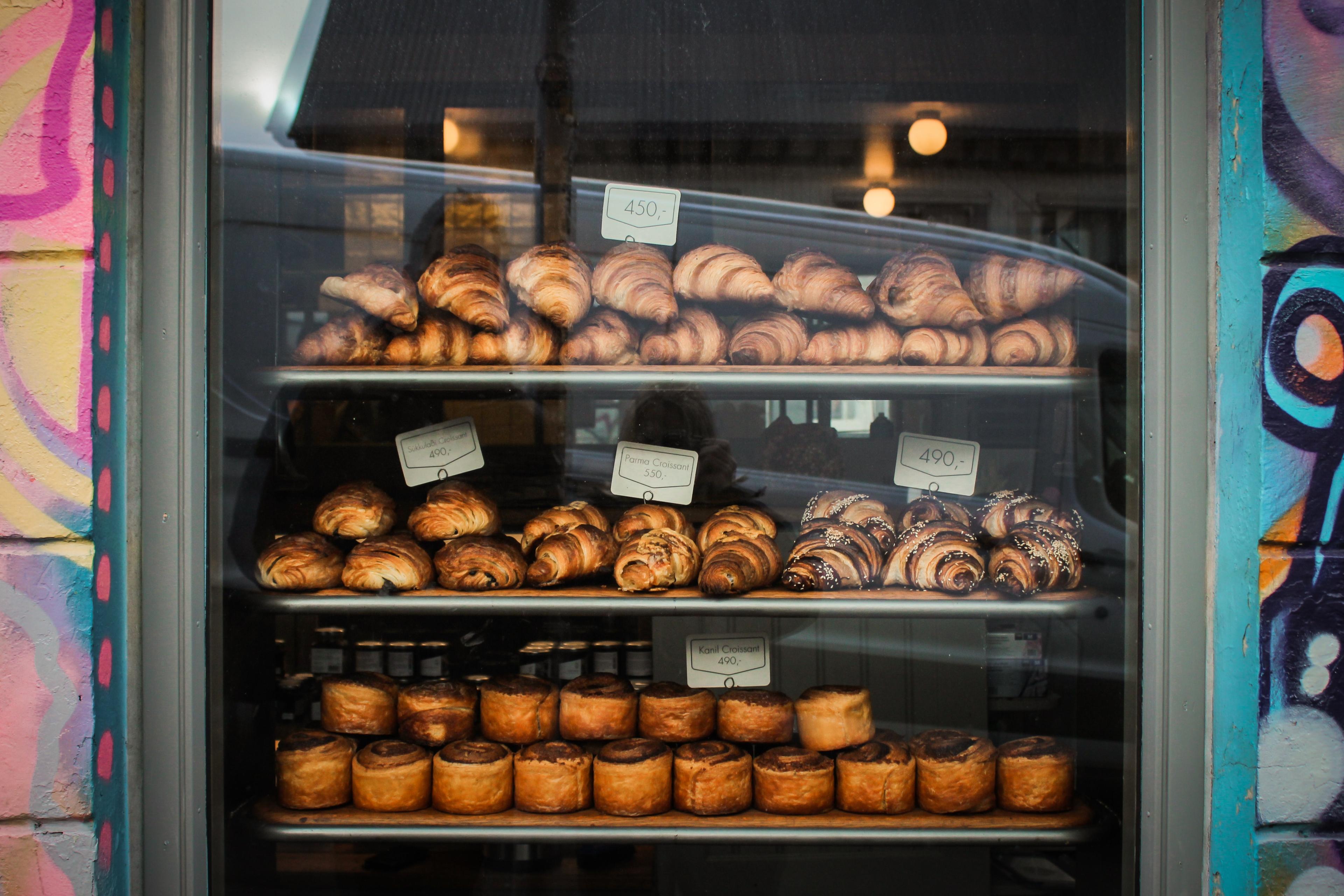
A Symphony of Flavours, Culture, and Nature
Reykjavík presents an Icelandic tableau of culinary treats, vibrant culture, and nature's wonders. Sample the local gastronomy at Reykjavík Fish or Icelandic Street Food, or discover modern takes at Dill and Grill Market. Remember to savour the famous hot dogs at Bæjarins Beztu Pylsur.
Culture vultures will revel in the city's museums and galleries, such as the National Museum of Iceland and Reykjavík Art Museum. The city's rhythm extends beyond these, though, echoing in the street murals, architecture, and melodies of Harpa.
Nature enthusiasts will find respite in the city's green spaces and geothermal pools like Laugardalslaug and Sundhöllin. For a bird's-eye view, head to Hallgrímskirkja's tower or Perlan.
Reykjavík is a city to savour, its mosaic of experiences leaving an indelible memory in the hearts of those who visit."
Navigating Customs, Language, and Budget
Traveling to a foreign country can be an exciting adventure, but it also brings along its own set of challenges. Here are some tips and tricks to help you navigate Reykjavík like a seasoned traveler.
Understanding and respecting local customs is vital to any travel experience. Icelanders are known for their friendliness and warmth, but they also value personal space and discretion. It's important to keep conversations respectful and avoid excessive loudness, especially in public spaces.
Tipping isn't a common practice in Iceland as service charges are typically included in the bill. However, if you receive exceptional service, a little extra is always appreciated. Remember to keep the environment clean and respect nature when exploring outdoor sites.
Learning a few Icelandic phrases can significantly enrich your travel experience. While most Icelanders speak fluent English, they appreciate it when visitors make an effort to use their language. Start with simple greetings like "Góðan dag" (Good day), "Takk" (Thank you), and "Bless" (Goodbye). For a culinary adventure, try ordering "Pylsa með öllu" (Hot dog with everything) - you won't regret it!
Budgeting for your trip to Reykjavík requires some foresight, as Iceland is often considered one of the more expensive countries to visit. However, with careful planning, you can enjoy the city without breaking the bank. Opt for local foods, utilize public transport, and take advantage of the numerous free or low-cost activities such as exploring the city on foot, visiting local parks, or simply basking in the beauty of Reykjavík's unique architecture and street art. Consider investing in a Reykjavík City Card for free entry to various museums and attractions and unlimited travel on city buses.
Remember, travel is not just about the destination, but also about understanding and immersing oneself in a different culture. With these tips in hand, you're ready to embark on an unforgettable journey through the charming streets of Reykjavík. Happy travels!
Reykjavík City Walk: All You Need To Know
Reykjavik is a great option for a weekend city break and in three days you can get under the skin of the city. Those spending three days here would probably opt for a day trip or two to take them out of the city to sights like the Golden Circle and south shore adventures.
Compared to most other European destinations, Iceland can be quite expensive. For example, a cup of black coffee costs an average of $5 and beer is particularly expensive at $9 for the average pint in 2023. However, there are plenty of ways to stick to a budget and still have a good time in Reykjavik. Finding happy hours in pubs across the city can keep the cost of entertainment down and dining at Reykjavik’s food halls rather than upmarket restaurants offer a budget alternative.
You’ll probably recognise the striking, stacked facade of Hallgrímskirkja, Reykjavik’s main church, from the front covers of guidebooks and photography books. But that’s not the only striking building in the city. Amidst the low-rise houses there’s the Harpa Concert Hall on the waterfront. Despite its small population (around 140,000 people), there’s a vibrant art scene in Reykjavik on show in the street murals and wall poetry.
Reykjavik has a cold oceanic climate with cool temperatures throughout the year.
Winter (November to March): Cold temperatures often hover near freezing. The first snow might fall in October or November, but continuous snow cover typically starts in December or January and lasts until late March. Storms and high winds are frequent.Daylight lasts only 4-5 hours in December and January, but starts lengthening significantly in February.
Spring (April to May): As temperatures warm, the days grow longer. The weather can be very variable, sometimes experiencing all four seasons in a single day. By May, the "Midnight Sun" provides continuous daylight.
Summer (June to August): The climate is mild, with temperatures ranging from 10°C to 17°C. There's less wind, fewer clouds, and reduced precipitation. Daylight persists for 24 hours, continuing through July until mid-August.
Autumn (September to October): The weather turns cooler with increasing rain and wind. Daylight hours decrease fast, and the first snowfall can occur by late October.
Given Reykjavik's unpredictable weather, it's wise to dress in layers.
If you are planning to rent a car, anywhere in the capital area is ideal. Even including its surrounding towns, Reykjavík is small compared to typical European or US capitals; you can drive through it in 15-30 minutes. If you have a car, it's wise to avoid the downtown area because parking can be a challenge. However, if you're not renting a car, ensure your accommodation is near a tour pickup bus stop. The downtown area has numerous pickup stops, but there are none in the suburbs.
The most popular attractions in Reykjavik are the main shopping street of Laugavegur, lined with clapboard shops selling puffin paraphernalia and cosy little restaurants and cafés. Hallgrímskirkja is one of the most striking buildings in the city, attracting photographers from far and wide. Spa-seekers flock to one of Iceland’s newest geothermal hot springs at the Sky Lagoon, jutting out over the Atlantic Ocean just outside the centre.
Although Iceland and the UK are in the same time zone, they do not always share the same time. Iceland uses GMT+0, and does not use daylight savings time so during some months of the year Iceland is an hour behind the UK. It is either four or five hours ahead of New York, depending on the time of year.
Ideally, you would spend two or three days dedicated to exploring Reykjavik. Ideally, allocate two or three days to explore Reykjavik thoroughly. For those who prefer a leisurely pace, wish to immerse themselves in the ambiance, visit museums, and mingle with the locals, you can easily spend even more days without getting bored. Many visitors who prefer not to drive use Reykjavik as a base, taking day trips to other parts of the island.
Reykjavik is on the southwest coast of Iceland and stretches in a horseshoe shape around Faxaflói Bay. Iceland’s only international airport, Keflavik Airport (not to be confused with Reykjavik Airport which is for domestic flights only), is 50 kilometres from Reykjavik and it takes around 45 minutes to drive from the centre to the airport.
The best month to visit Reykjavik depends on what you want to do. Those seeking the Northern Lights will need to visit in the darker months of late autumn and winter. It’s possible to see the ethereal green lights dancing in the night sky between September and March, but the deeper in winter (late November, December and January) you are, the more likely you are to spot them. The middle of summer is the peak season for whale watching when the sealife is at its most active and the weather tends to be more reliable and warm.
Two days is enough to see the highlights of Reykjavik – boat tours out into Faxaflói Bay to watch the wildlife, walks along the seafront to snap the perfect picture of the Sun Voyager glowing in the light at sunset, learning the Viking history of the island at the Saga museum and sampling some of the Icelandic food and drink on offer.
Reykjavik offers several convenient options for getting around:
Hop-On Hop-Off Bus: Ideal for sightseeing, this bus service allows tourists to explore major attractions at their own pace. You can hop off at a site of interest and then hop back on to proceed to the next location.
Walking: Thanks to its compact size, Reykjavik is a highly walkable city. You can easily traverse the city center from one end to the other in about ten minutes.
Public Transport: While Reykjavik's public transportation system is efficient, it may not run as frequently as those in larger capitals. However, it remains a viable option for getting from point A to B.
Electric Scooters & Bicycles: Especially popular in the summer months, rentable electric scooters and bicycles provide a fun and eco-friendly way to navigate the city streets.
Regardless of your preferred mode of transportation, Reykjavik offers a pleasant and manageable experience for visitors.
A day is the absolute minimum you should spend in Reykjavik. It may be a small city, but there is much to see and do, from whale-watching to sampling local cuisine and hitting the museums.
Pronouncing "Reykjavík" can be a bit tricky for those unfamiliar with Icelandic phonetics. Here's a basic guide:
Reykjavík: [ˈreiːkjaˌviːk]: “raikeyow-veek”
Reyk - Sounds like "raike" but with a rolled "r"; avík - Sounds like "yow-veek".
Emphasis is on the first syllable: REYkjavík.
Activity-wise, there is plenty to do in Reykjavik. Join the hop-on hop-off bus to hit the highlights of the city from the beautiful Hallgrimskirkja church to the modern Perlan building offering sweeping views from atop a hill. Whale watching boat tours leave from the old harbour out into Faxaflói Bay and there are myriad museums covering everything from Vikings to whales and punk music. Then there’s rest and relaxation on offer at the Sky Lagoon, a geothermally heated lagoon on the outskirts of the city.
While Reykjavík is a great city to explore on foot, the weather can sometimes get in the way. That’s why the summer is probably the best time of year to discover the best of the city’s gems. There’s the added bonus of midnight sun to enjoy at this time of year too.
That said, advent—the period approaching Christmas—is a great time to see Reykjavík as well. The whole city gets covered in beautiful festive lights.
Reykjavík is a pedestrian-friendly city that is always trying to improve its walking and cycling infrastructure. In the area around Laugavegur, for example, you’ll find lots of pedestrianised space.
A walk around Reykjavík can be as long as you want it to be. The more time you have, the more hidden gems you’ll discover! You could easily spend a day or two walking around the city, exploring its sights at your own pace and taking in its unique vibe and scenery.
To get an idea of how to dress for your city walking tour, it’s best to look at the weather when you’re there. If you’re taking a tour on a sunny summer’s day, you’ll dress differently to those taking a tour on a cold winter’s afternoon.
There are two things that are important to consider, though. Firstly, as you’ll be walking, wear some shoes that are comfortable and practical. Then, bear in mind that Iceland’s weather can be pretty changeable. While it might be sunny right now, it could rain later on—so packing a jacket might be a clever move!
Reykjavík is a really walkable city that rewards exploration on foot. Much of it is flat, particularly around the harbour and downtown. What’s more, many of the coastal views are stunning.
Outside of the very centre, Reyjavík does become a little hilly and is quite steep in places. But overall it’s still very walkable.
Reykjavík is an incredibly walkable city. Most of the centre is quite flat, and you’ll discover most of the city’s main sights in a fairly compact area. Reykjavík’s also known for being very safe—as it’s the capital of the safest country in the world!
The only thing that might occasionally put you off walking is the weather. If it’s windy or rainy, you might prefer to take Reykjavík’s hop-on hop-off bus tour instead.
Iceland is one of the safest countries in the world and Reykjavík is its friendly and welcoming capital. The city is safe to walk around at any time of day, particularly in the centre. During the summer, it stays light very late into the evening.
If you feel unsafe at all, or you’re in danger, call the local emergency services at 112.
If you’re an outdoor enthusiast, you’ll find many exciting trails within and around Reykjavík city. Here are some ideas to get you inspired:
- Öskjuhlíð. Climb through the forest to the top of the hill, where you’ll find the Perlan complex and great views over the city.
- Elliðaárdalur. It’s a valley just 10 minutes from the centre of town, with rapids, forest trails, and waterfalls.
- Úlfarsfell. Reykjavík’s local mountain is to the east of the city, offering breathtaking views over West Iceland in fine weather.
- Seltjarnarnes. Stroll around this picturesque peninsula, with its lighthouse known as Grótta.
Laugavegur is Reykjavík’s main shopping street, with many local boutiques, cafes, and bars. Most of it is pedestrianised, making it a relaxing and welcoming street to wander down. Many of the adjacent streets are pedestrianised too, including Vegamótastígur, Vatnsstígur, and parts of Skólavörðustígur.
Recommended tours
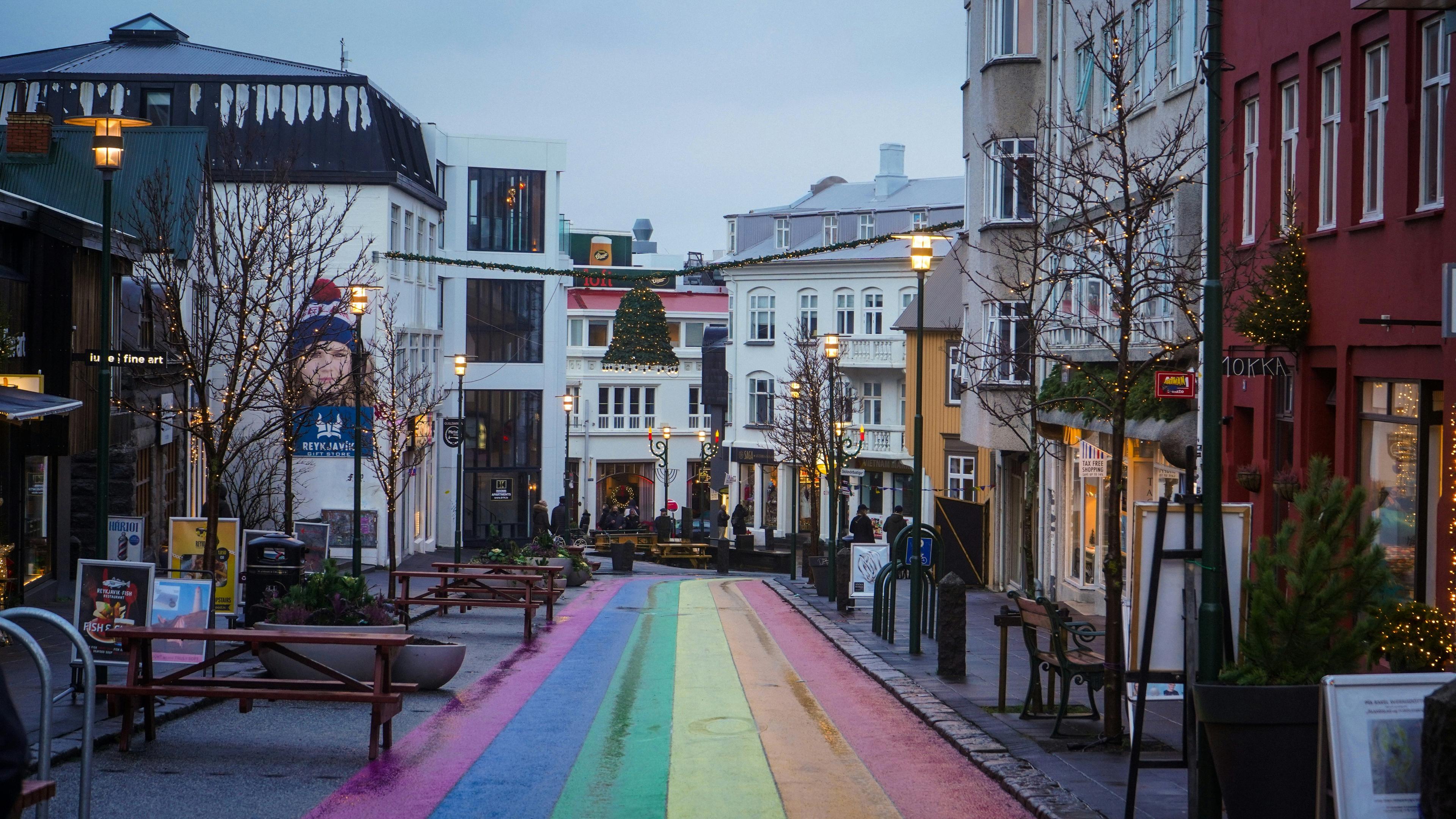
- Holiday Tour
Reykjavík Christmas Walk
This cultural and gastronomic walking tour of Reykjavík is a wonderful alternative to your traditional city sightseeing tour and will get you into a true Christmas mood!
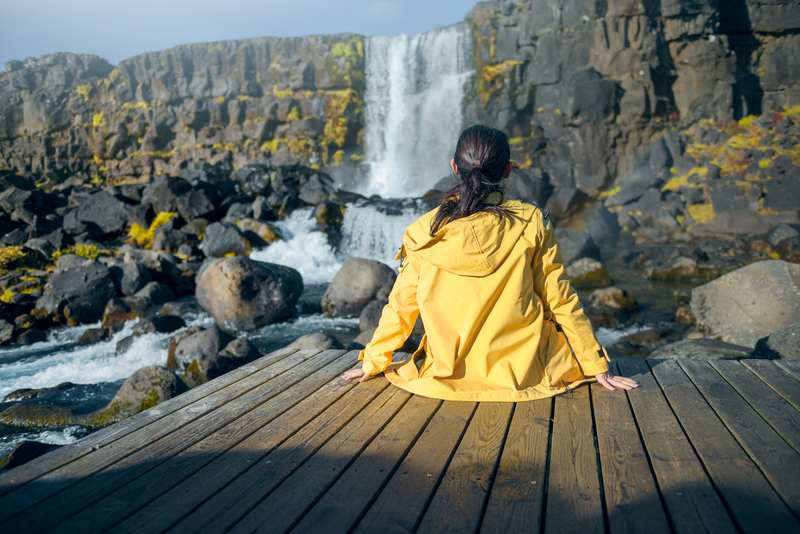
The Golden Circle & Hop On Hop Off - Combo Deal
Experience the best of Iceland's natural wonders and the charm of its capital city with our Golden Circle & City Sightseeing combo. This tour combines an insightful 8-hour journey through the iconic Golden Circle, with a visit to the Fridheimar Tomato Greenhouse along the way, and additionally, the flexibility of exploring Reykjavík at your own pace on the Hop On Hop Off bus.
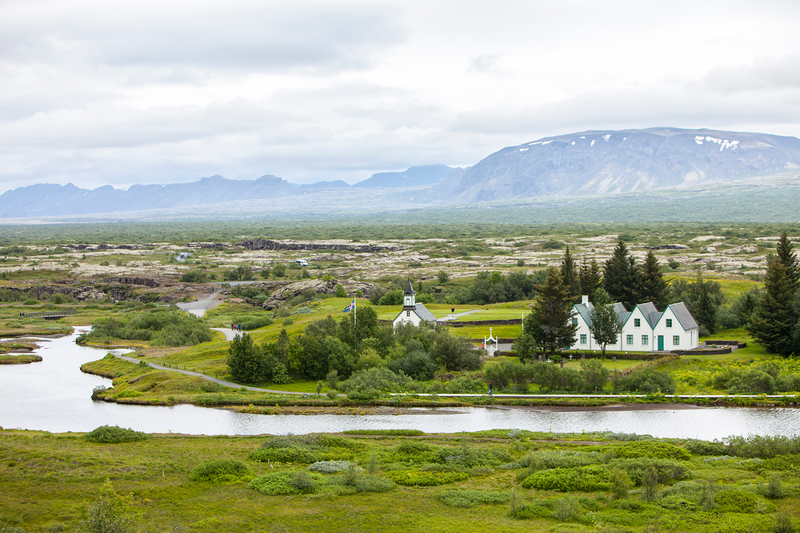
- Multiday Tour
Iceland On a Budget - 5 days
Discover Iceland’s breathtaking landscapes and vibrant capital without stretching your budget on this 5-day (4 nights) Iceland on a Budget package. Experience the country’s most famous sights, including the Golden Circle’s geysers and waterfalls, the dramatic South Coast, and Reykjavík’s best landmarks with a Hop-On Hop-Off city pass. With affordable travel, carbon-neutral transportation, and expert local guides, this package provides an incredible Iceland experience at great value.
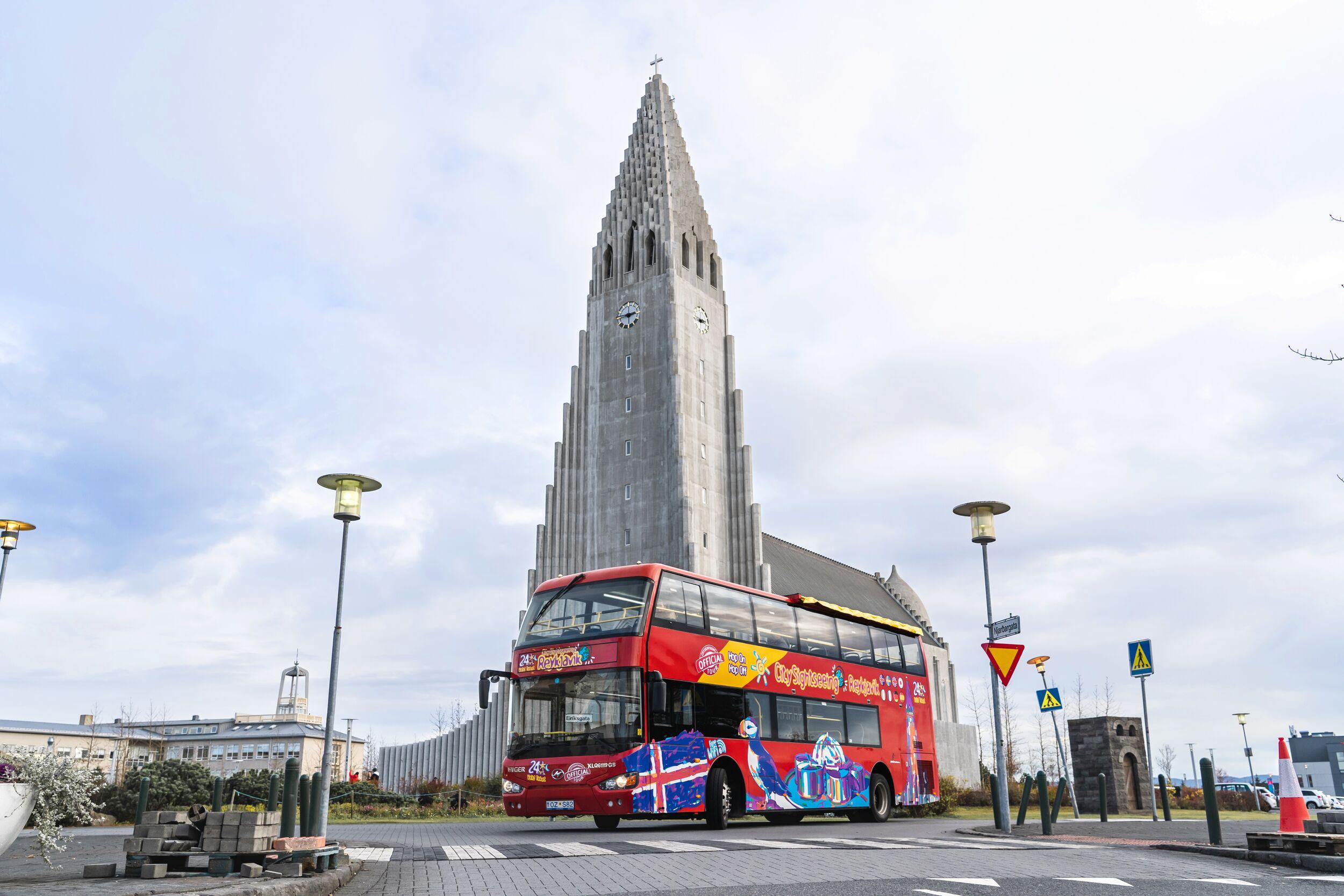
Hop On - Hop Off - City Sightseeing 48 hours
Delve deep into the heart of Reykjavík with our 48-hour City Sightseeing Hop On Hop Off bus pass. This extended pass offers you the freedom to explore Reykjavík's modern vibe and its proximity to nature at your own pace, with plenty of time to discover all the hidden gems of this magical city.

- Multiday Tour
Iceland On a Budget - 7 days
Explore Iceland’s breathtaking landscapes, geothermal hot springs, and volcanic wonders on this 7-day (6 nights) Iceland on a Budget package. See the geysers and waterfalls of the Golden Circle, marvel at the black sand beaches of the South Coast, and discover Reykjavík’s cultural landmarks with a Hop-On Hop-Off city pass. Relax in the serene geothermal pools of Hvammsvík and step inside a real lava tunnel, where you’ll walk through Iceland’s volcanic history. With affordable travel, carbon-neutral transfers, and expert local guides, this package provides a budget-friendly way to experience Iceland’s best sights.
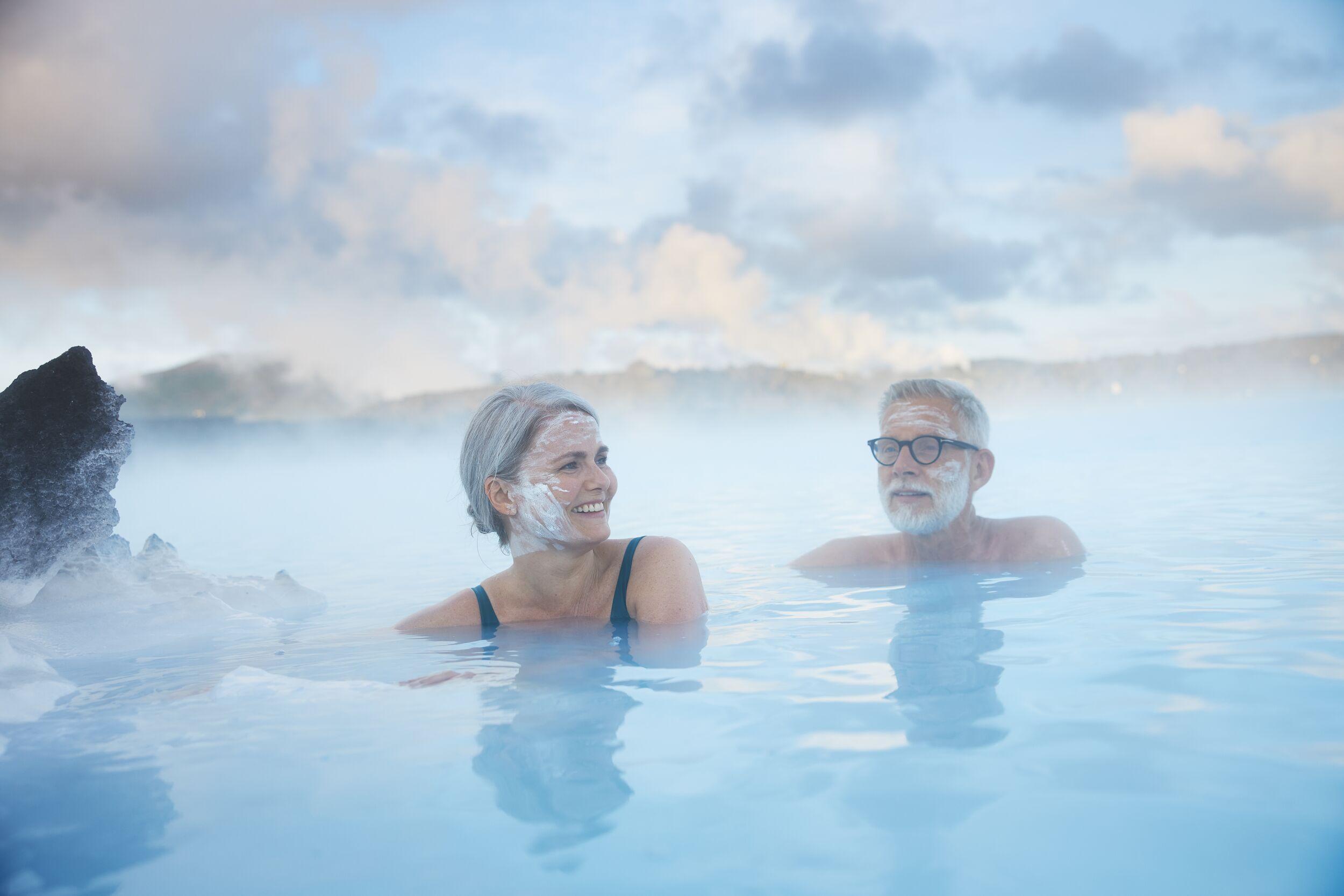
- Multiday Tour
Icelandic Wellness Package - 5-Day
Golden Circle, Fontana Spa, Blue Lagoon & Reykjavík Food Walk. A perfect blend of relaxation, natural beauty, and Icelandic culture, this 5-day (4 nights) Icelandic Wellness package invites you to unwind in Iceland’s famous wellness retreats and indulge in Reykjavík’s unique Nordic atmosphere.


